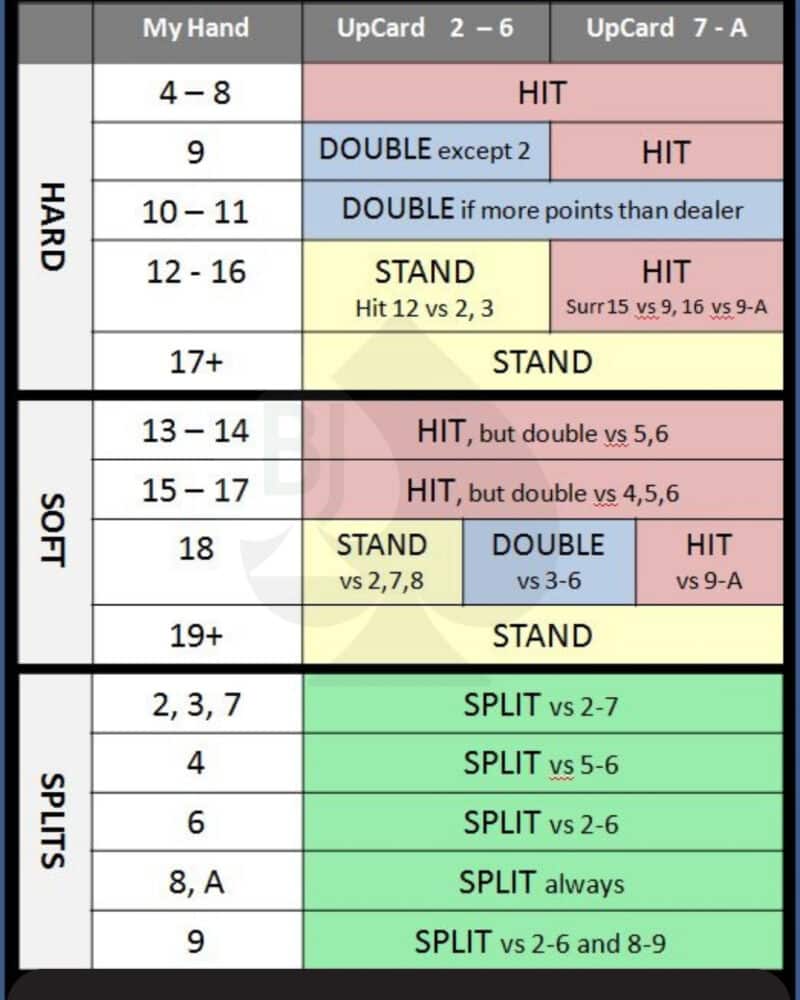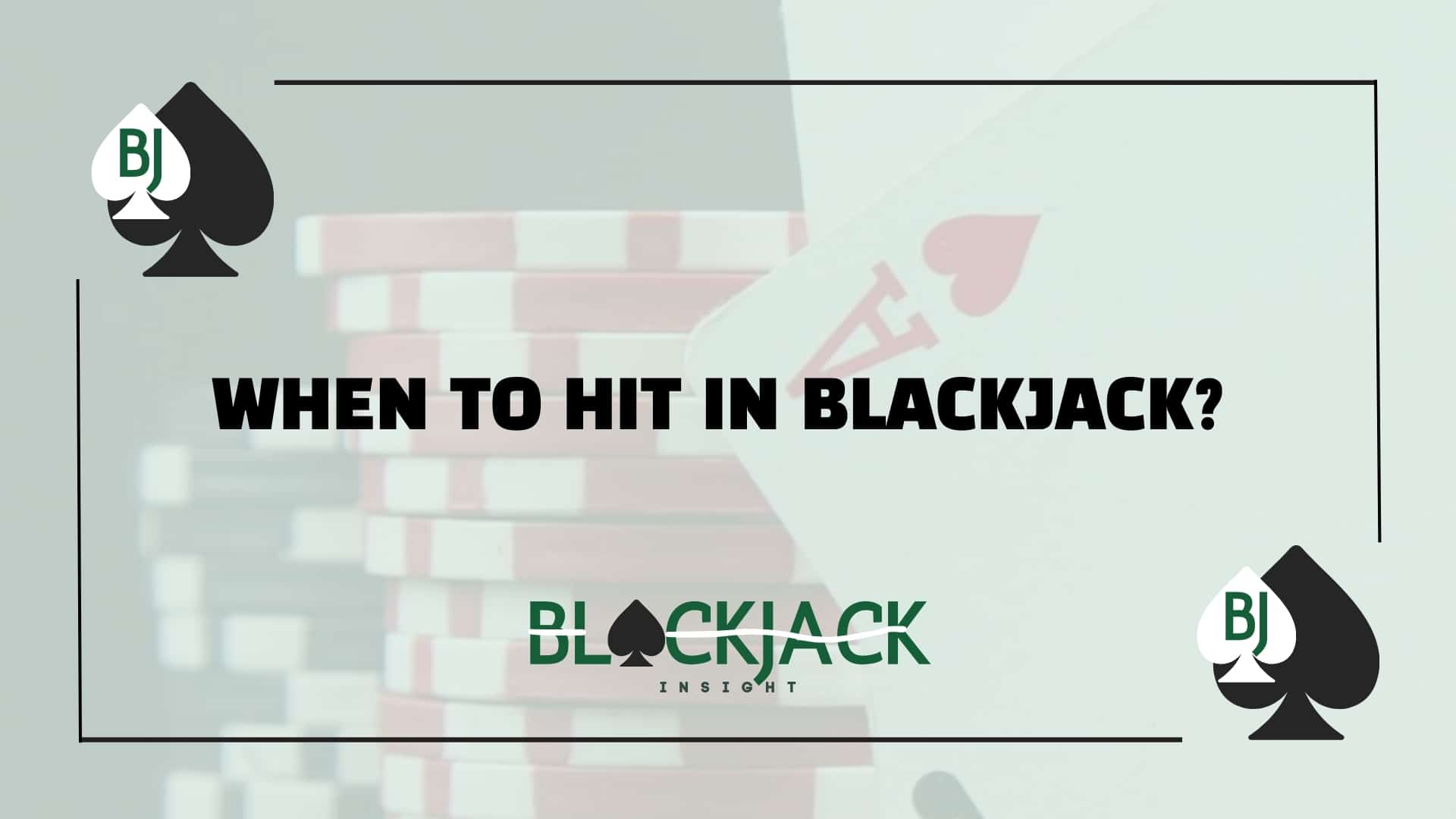When to Hit in Blackjack?
Table Of Content
In blackjack, you should hit when your hand isn’t strong enough to beat the dealer’s, especially if the dealer shows a 7 through Ace. Always hit totals of 8 or less, usually hit on 9–11 unless doubling is better, and hit 12–16 only if the dealer has a strong upcard. Never hit 17 or higher. Soft hands like Ace + 6 (soft 17) should be hit against strong dealer cards. Smart hitting decisions are based on both your total and the dealer’s upcard—not just fear of busting.
If you’re here wondering when to hit in blackjack, you’re already thinking like someone who wants to win, and that’s a great start. Hitting isn’t just about feeling lucky or following your gut. It’s about knowing what move gives you the best chance of beating the dealer. That little tap on the table might seem simple, but in reality, it’s one of the most important decisions you’ll make every single hand.
I’ve been playing blackjack for years, sometimes for fun with friends, other times with a bit more on the line. And if there’s one thing I’ve learned, it’s this: people lose more money hitting when they shouldn’t (or freezing up when they should hit) than for any other reason. So if you’re sitting at the table, second-guessing whether to ask for another card, this guide’s for you.
So, What Does “Hit” Actually Mean in Blackjack?
Sounds obvious, but let’s clear this up. To “hit” in blackjack means you’re asking the dealer for one more card. You do this when you think your hand isn’t strong enough to beat the dealer’s, and you want to get closer to 21 without busting (going over).

The Golden Rule
Here’s a mistake I see all the time: new players obsess over their own hand total and forget to consider what the dealer’s showing. That’s like trying to win a chess game without looking at your opponent’s moves.
If the dealer’s showing a 2 through 6, they’re considered to have a weak hand. That means you can afford to stay on some lower totals, because the dealer is more likely to bust.
But if they’ve got a 7 through Ace showing? That’s strong. You’ll need to be more aggressive and hit until your hand is good enough to compete.
When to Hit in Blackjack By the Numbers
Let’s break it down with simple scenarios. You don’t need to memorize a massive chart, though cheat sheets help, but knowing these key moves will save you money in the long run.
Always Hit These Hands (Almost Always, Anyway)
- 8 or less: Always hit. No matter what the dealer has, you can’t bust.
- 9: Hit unless the dealer has 3-6. If they do, you might want to double instead.
- 10 or 11: Hit, and if the dealer has a weaker card, consider doubling down.
- 12: This one messes with a lot of people. If the dealer has a 2 or 3? Hit. If they have 4-6? Stay. If it’s 7 or more? Hit.
I once sat next to a guy in Vegas who refused to hit on 12. “Too risky,” he said. The dealer had a 10 up. He stayed. The dealer flipped a 5 underneath, then a 6. That guy’s face? Priceless. He would’ve saved the table if he had taken that hit.
The Troublemakers: 13 Through 16
These totals are the real stress zone. Not high enough to feel safe, not low enough to hit without fear.
- 13-16: Hit if the dealer shows a 7 or higher. Stay if they’ve got 2 through 6.
- 15 vs 10? Hit. It’s ugly, but the math says you should.
- 16 vs 10? Still hit. Yes, even though it feels like a coin toss.
- Do you hit on 14? Depends. Against a 7 or higher, yes. Against anything lower, no.
The goal isn’t to avoid busting; it’s to win. And sometimes, that means hitting when you know there’s a risk.
When Not to Hit in Blackjack
You’ve got a decent total, and the dealer looks weak? Time to chill.
- 17 or more: Never hit. Doesn’t matter what the dealer’s showing—you’re likely to bust.
- Soft 18 (Ace + 7): Tricky. Hit if the dealer shows 9, 10, or Ace. Otherwise, stay.
- Soft hands (hands with an Ace) give you flexibility. A soft 17 is not the same as a hard 17. If you’ve got Ace + 6 and the dealer has a strong card? Hit.
Why “When to Hit” Is Crucial?
If you choose poorly (like hitting a borderline hand when the dealer’s in a weak spot), you might bust unnecessarily. If you skip hitting when the math says it’s correct, you might miss out on winning scenarios.
A well-timed hit can minimize your losses and capitalize on favorable conditions. A poorly timed one can do the opposite, leaving you to watch the dealer flip a big card and wonder why you didn’t stand or double down instead.
Hitting is part of the bigger puzzle. Sometimes you might stand, sometimes you might surrender, and sometimes you might split. All these choices complement each other, forming the core of your blackjack strategy.
Common Mistakes & Pitfalls
There are some common mistakes players can make:
Emotional or Impulsive Hitting
Players sometimes “just go for it” if they’re on a losing streak or angry at the dealer. That can lead to illogical hits on totals where they should stand.
Fear of Busting
Another biggie is standing on totals like 14, 15, or 16 vs. a dealer 10 out of bust fear. While it might feel safe in the moment, over the long run, basic strategy says hitting gives a slightly better EV in these tough spots.
Ignoring Dealer’s Upcard
No matter your total, always factor in whether the dealer’s card is weak (2–6) or strong (7–Ace). This is the essence of blackjack’s strategic advantage for the player.
Mismanaging Soft Hands
A–6 might look like 17, but it’s actually “soft 17” with room to draw without busting. Many players stand too early, missing the chance to improve or even double.
FAQs
1. Should I hit 16 vs. a dealer 10?
Usually, yes. It’s painful, but hitting yields a slightly better EV than standing, even though bust risk is high.
2. Do I keep hitting soft hands until I get at least 17?
Typically yes, unless there’s an opportunity to double or the dealer’s upcard suggests a different move.
3. Are there times I shouldn’t hit totals under 12?
Rarely. You generally want to keep drawing if you can’t bust on the next card, unless splitting or doubling is more beneficial.
4. Do you hit on 16 in blackjack?
Yes, if the dealer’s showing a 7 or higher. You’re trying to beat a likely strong hand. If they’re showing 2–6, stand.
5. Do you hit on 13?
Only if the dealer has 7 or higher. Against weak cards (2–6), you stay and hope they bust.



